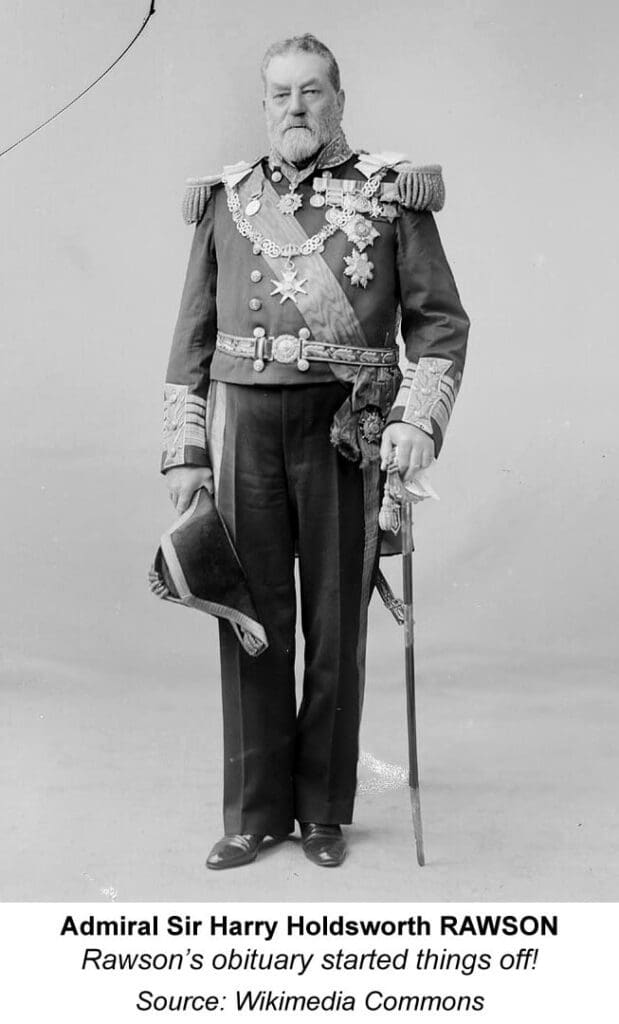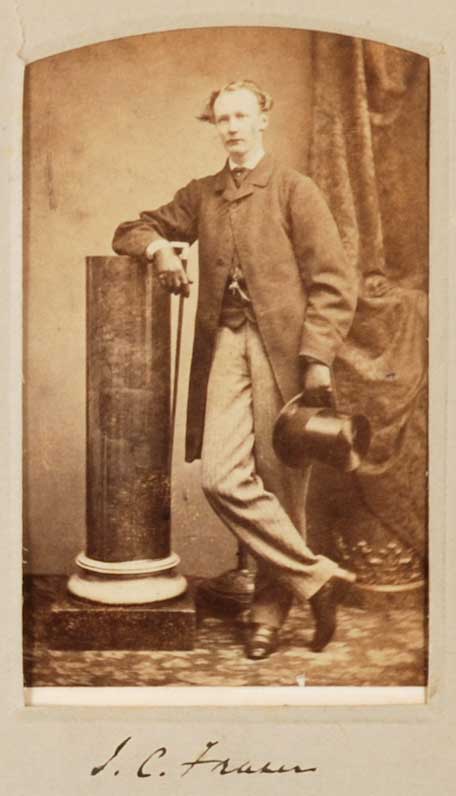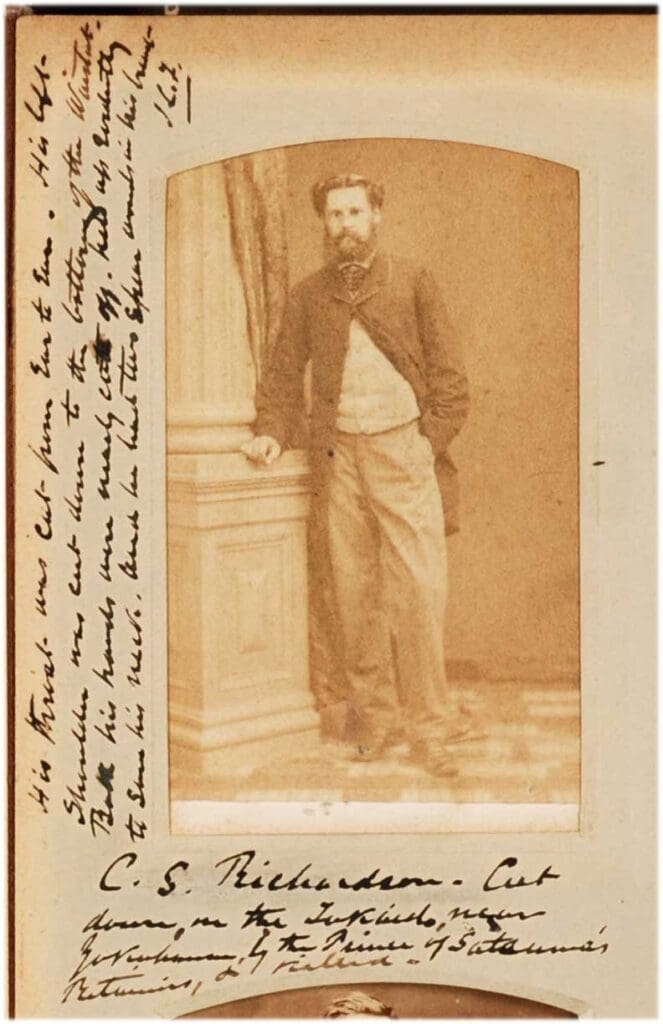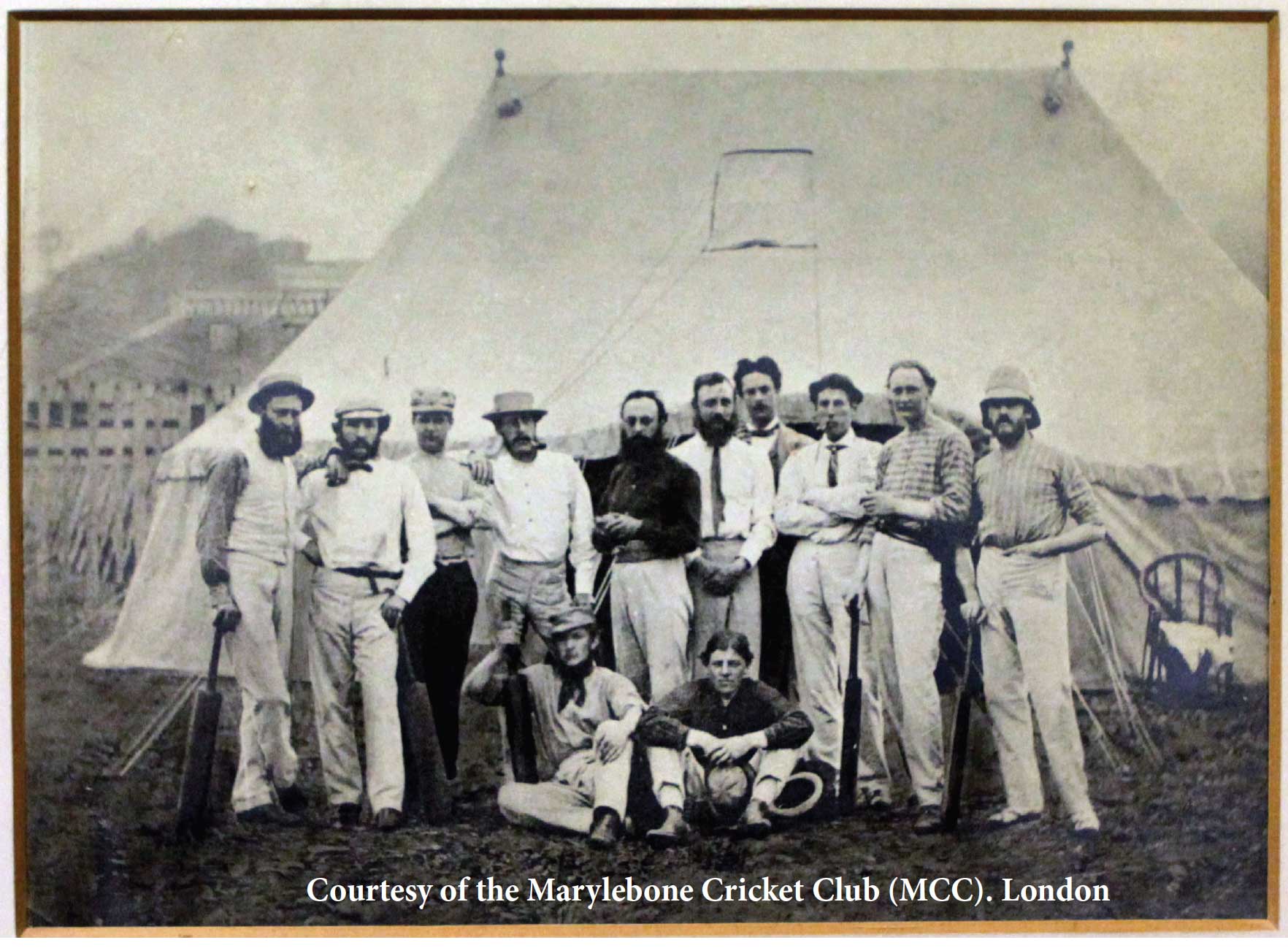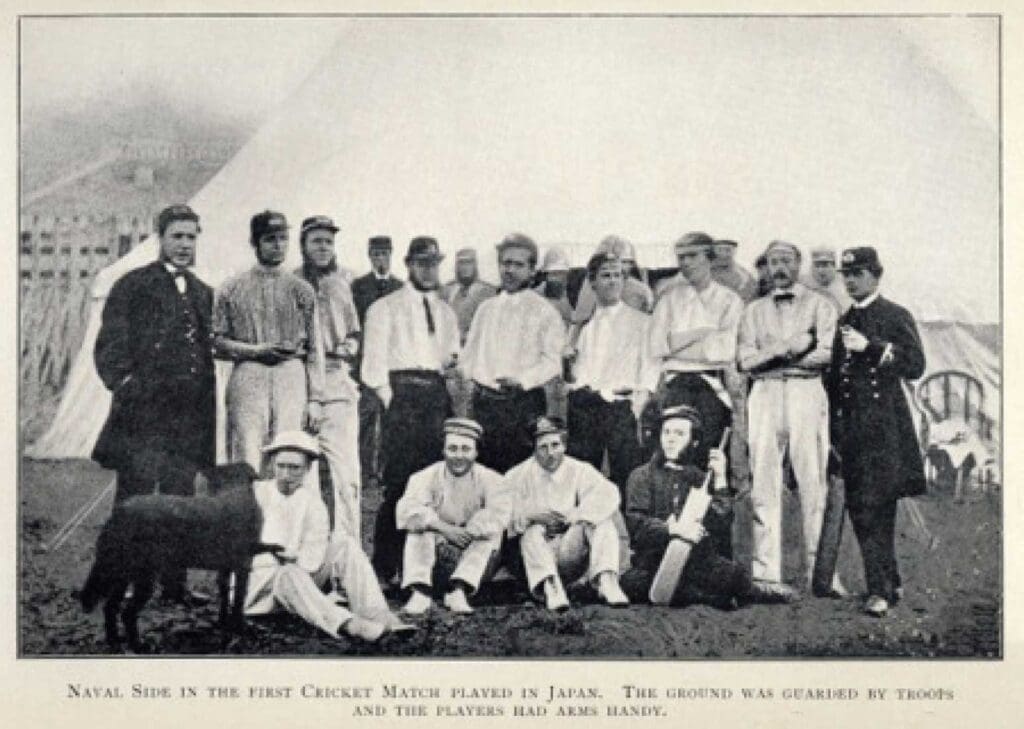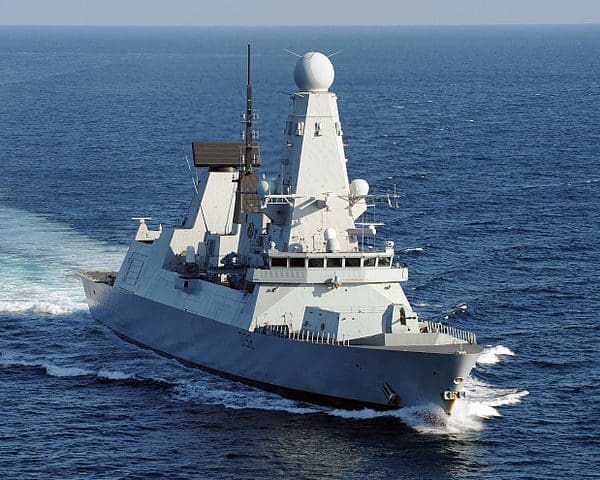Words: Mike Galbraith
Chance discovery
“ADMIRAL SIR HARRY HOLDSWORTH RAWSON, G.C.B., G.C.M.G., died on November 3rd, aged 66. He played in the first match which ever took place in Japan, being a member of the Fleet team which beat Yokohama in 1863. Whilst Governor of New South Wales (1902-1907) he showed his interest in the game by becoming the Patron of the New South Wales Cricket Association.”
Shortly after, I was asked to give a short talk about any aspect of YC&AC’s cricket history, at a dinner being held at the Club after a match between the YC&AC and a team arranged by the Japan Cricket Association (JCA) . Eddie Jones, who played for the YC&AC that day was present as was Alex Naoki Miyaji, the president of the JCA. In the talk I explained the few facts I had discovered and showed the one photograph I had found in the Rawson biography.
1908 article and original 1863 photos located
I was keen to find out more about this game and the people who played it. From my research about those early cricketers and other sportsmen in 19th century Japan, I knew one useful potential source of information is always the School Registers of famous schools. I was able to find more information about that first cricket match in Yokohama in the Harrow School Register which stated that James Campbell Fraser ‘captained the Yokohama side in a cricket match (Yokohama vs the Fleet) played in curious circumstances at Yokohama in 1863 (see Cricket April 16th 1908)’ and thus offered a clue as to where to look next for more information. However, searches of the internet for this issue of the Cricket magazine turned up nothing and even the British Library couldn’t help me.
One might easily guess that I was soon on the phone again to the lady in Lord’s library. I asked her if she had seen the original photos of the two teams. She replied that she hadn’t and that the library had just started cataloging all the items in its memorabilia collection. She said it would take two years and suggested I contact the library in two years time. As she was putting the phone down I said “Wait a minute. Couldn’t you just have a quick look round the memorabilia room? You might see it, especially if you look at the photos in the article you just sent me.’ Somewhat reluctantly she said she would give it a go.’ About 15 minutes later, she emailed me her photo of the Shore team photo included the mount which contained the names of the players. Her Shore team photo included. When I visited Lords the following year, I discovered there was a similar photo and mount of the Navy team.
150th anniversary celebrations of ‘lost’ first ever cricket match including national team tour to UK
The next thing that happened was that, realising that the next year (2013) would be the 150th anniversary of the game in 1863 and thinking about whether we could celebrate the anniversary. I telephoned the JCA president Alex Miyaji and informed him. To my surprise Mr. Miyajji, whose mother is Scottish, immediately started organising a cricket tour by the national team to the UK together with his contacts there. One of the highlights of the tour was a match played at Lord’s, the home of the MCC which was founded in 1787. The Japan team played against an MCC team at Lord’s, the home of cricket, for the first time in history although, in fact, the match was not played on the main ground there but on the secondary ground called the Nursery ground. Having said that a reasonable crowd, including Japan’s ambassador to the UK and several senior figures in London’s Japanese community and friends, watched the game.
On a separate note, I had the crazy idea of issuing a challenge to the UK’s Royal Navy via the British Ambassador in Tokyo and found the JCA’s Miyaji-san willing to give it a try. I wrote out a daft ‘To Who It May Concern Letter’ containing the challenge and Miyaji-san put it on the JCA letterhead and signed it and I passed it to the Ambassador who said he would send it to an appropriate person in the UK.
A few months passed without any response and so, working with fellow sports historian Alex Hendy, we planned a 150th anniversary cricket match with the British Embassy team at the Club followed by a dinner in the Gymnasium in June 2013. We even planned a mock attack by ronin (masterless samurai) during the game. It was at this event that one of the British Embassy staff smiled and informed me that the Royal Navy wanted to take up the challenge but that for security reasons, the actual date of the match had to be kept secret until the last minute.

This year is another big anniversary – the 160th – of that first match and again there is talk about a possible game involving the Royal Navy and if it happens the Club will only learn of it shortly before it takes place for security. Regardless of whether a Royal Navy XI comes and plays cricket, there is no reason why the Club can’t arrange some kind of celebration.
GALBRAITH’S LATEST DISCOVERIES REGARDING CRICKET MATCHES (AND RUGBY) IN 1863 AND THEIR DATES WILL BE REVEALED IN THE UPCOMING YOKOHAMA HISTORY SOCIETY (YHS) TALK “1863: New light on events in Yokohama and Bombardment of Kagoshima” AT 7 PM AUGUST 17th AT THE YC&AC

